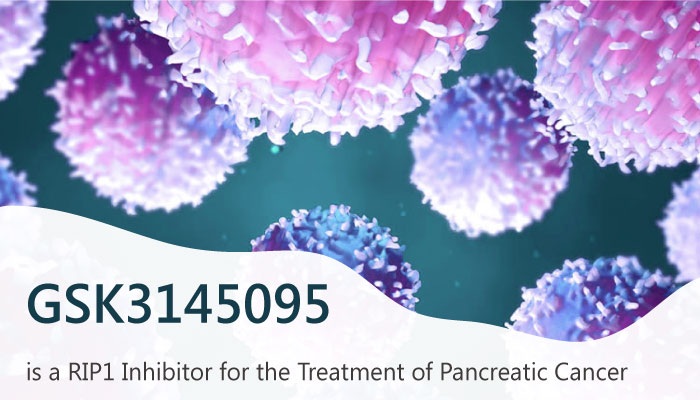Receptor interacting protein (RIP) kinases are a group of threonine/serine protein kinases. They have a relatively conserved kinase domain but distinct non-kinase regions. The RIP kinases contain seven members, all of which share a homologous kinase domain but have different functional domains. RIP1 contains a C-terminal death domain, through which RIP1 can be recruited to signaling complexes that initiate different pathways. RIP1 regulates cell death and inflammation and is believed to play an important role in contributing to a variety of human pathologies, including immune-mediated inflammatory diseases and cancer. Receptor interacting proteins (RIPs) 1 and 3 are known to form a complex termed necrosome that leads to a form of cell death called necroptosis and inflammatory cytokine production.

GSK3145095 is a RIP1 kinase inhibitor in phase 1 clinical studies for pancreatic adenocarcinoma and other selected solid tumors. It potently binds to RIP1 with exquisite kinase specificity and has excellent activity in blocking RIP1 kinase-dependent cellular responses. This inhibitor was also able to promote a tumor suppressive T cell phenotype in pancreatic adenocarcinoma organ cultures. It showed no inhibition of any kinase other than RIP1 at a concentration of 10 μM. A distinctive feature of RIP1 type III inhibitors is a significant reduction in potency against nonprimate RIP1. GSK3145095 is over 380-fold less potent against nonprimate RIP1 compared to primate RIP1. It shows a 340-fold reduction in cellular potency for blockage of necrotic death in mouse fibrosarcoma L929 cells (IC50=1.3 μM) compared to human U937 cells (IC50=6.3 nM). This reduced RIP1 mouse potency precludes evaluation of this compound in rodent oncology models.